Can you really use foam filled tires for a mower? If you are searching for an accurate answer to this question, you have come to the right place. The short answer to this question is Yes. But it’s crucial for you to understand the many factors that will go into the process required for you to achieve this feat. In the following sections, you will find everything that you need to know in order for you to successfully foam fill mower tires for your best mower!
Mowers are the true epitome of convenience, power & efficiency. Bringing you the ultimate comfort in your work, these mowers are indeed a boon to the people who cannot spend hours cutting their yards or banks. But all is not a bed of roses with mowers. If taken care of being maintained, they can serve you for a long time. However, this maintenance has been known to be neglected by the people.
This needs to be changed, and it is not that much difficult either.
Mower tires need to be checked regularly to see if they are in proper shape and condition. Prone to being punctured often as a result of stones on the yard, need to be taken care of. Contrary to their belief, maintenance of mower tires is not a tiresome job. It can be done with ease, and your mower will be back in action and serving you at its best – if you know how to correct the job yourself.
One of the most efficient but rarely known DIY techniques is that of foam-fill mower tires. This will not only ensure that your mower tires are restored to their original condition and give it a charm that will last long. It will also ensure durability, increase efficiency, and longevity.
However, before you pursue this method, you need to know every minute detail involved in the method. To assist you in your undertaking, we have taken it upon ourselves to research all about it, so you can just read this informative article and get to work.
200x50 Tire Solid Tire(Foam Filled Tires) For Razor E100 E150 E175 E200 fits Gas Scooter Electric Scooter 2-wheel Smart Self Balancing Scooter By TOPEMAI
FYIYI New solid/foam filled 200x50 (8 X 2) Tire For Razor 200 X 50 (8 X 2) E100 E150 E175 E200
260x 85 (10x3) Primo Power Trax Foam Filled Tire for Scooters, Power Chairs and Electric Wheelchairs. Price is for 1 Tire
Check Price on Amazon
Check Price on Amazon
Check Price on Amazon
200x50 Tire Solid Tire(Foam Filled Tires) For Razor E100 E150 E175 E200 fits Gas Scooter Electric Scooter 2-wheel Smart Self Balancing Scooter By TOPEMAI
Check Price on Amazon
FYIYI New solid/foam filled 200x50 (8 X 2) Tire For Razor 200 X 50 (8 X 2) E100 E150 E175 E200
Check Price on Amazon
260x 85 (10x3) Primo Power Trax Foam Filled Tire for Scooters, Power Chairs and Electric Wheelchairs. Price is for 1 Tire
Check Price on Amazon
Foam filled tires may not be the right choice for everyone. In fact, the majority of people, including “experts,” will recommend using tires with solid rubber cores. The truth is, for most people, foam filled tires are better suited for the task, especially for riding lawn mowers. Foam filled tires are harder, more durable, and can easily handle the rigors of a mechanical riding mower.
In fact, the majority of people, including “experts,” will recommend using tires with solid rubber cores. The truth is, for most people, foam filled tires are better suited for the task, especially for riding lawn mowers. Foam filled tires are harder, more durable, and can easily handle the rigors of a mechanical riding mower.
And because the tires are now inflated with foam instead of air, they will not deflate over time as the foam will not leak out. Meaning if your tires deflate every time you pull out of the garage, this might be the perfect solution for you. This is especially true if you have any type of riding lawn mower, whether it is a lawn tractor or a zero-turn.
Another key difference between foam filled and solid tires is that foam filled tires are more durable. There is very little reason to replace foam filled tires even if you only use them seasonally. Replace solid rubber tires every 1-2 years to protect yourself from an unexpected flat tire or blowout.
Another defining factor between solid rubber tires and foam filled tires is the cost.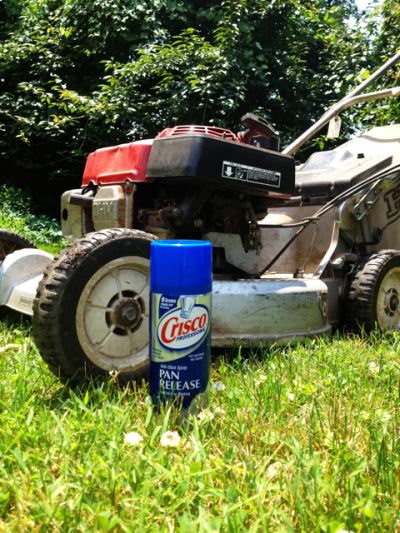 A new set of solid rubber tires will cost you well over $100 for each wheel. Adding up the cost of four tires to the cost of a new lawnmower is almost a deal-breaker for many people. A simple (albeit more labor-intensive) process of adding foam filled tires to existing solid tires will cost you no more than $40 for each tire. Adding just $15.49 in tire foam and another hour in labor can double your mower tire’s life. You can expect your new foam filled tires to last 3-5 years before you will need to do it again.
A new set of solid rubber tires will cost you well over $100 for each wheel. Adding up the cost of four tires to the cost of a new lawnmower is almost a deal-breaker for many people. A simple (albeit more labor-intensive) process of adding foam filled tires to existing solid tires will cost you no more than $40 for each tire. Adding just $15.49 in tire foam and another hour in labor can double your mower tire’s life. You can expect your new foam filled tires to last 3-5 years before you will need to do it again.
Pros:
Cons:
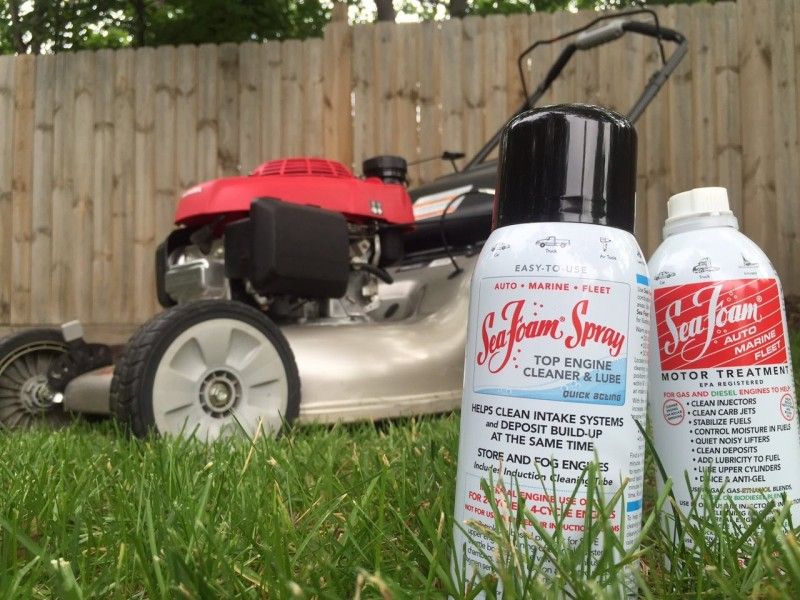
Foam-filled tires are not flexible. Hence, less rubber comes into contact with the lawn, which leads to degraded traction. Most riding mowers weigh several hundred pounds, and you need traction to prevent wheel slippage. All traction comes from the tires themselves. If you lose traction, you could bottom out the mower, which could damage the frame or, even worse, cause a serious accident. So, you should be careful with the reduction of traction.
Foam-filled tires are similar to air-filled tires in a lot of ways. As long as you adhere to the proper filling procedure highlighted in this article, you should be fine. The key ingredient you need to keep in mind is bead sealer. Bead sealers are used to seal the tires from the outside elements. If you use any kind of tire sealer, please be sure to read the directions carefully.
You should also use foam-filled tires in cooler conditions. The heat will cause the rubber-based foam to expand and then contract as it is reheated. This will lead to cracking of the foam, causing your tire to become unsealed. As long as you use these tires under the proper conditions listed in your instructions, you should be fine.
This will lead to cracking of the foam, causing your tire to become unsealed. As long as you use these tires under the proper conditions listed in your instructions, you should be fine.
200x50 Tire Solid Tire(Foam Filled Tires) For Razor E100 E150 E175 E200 fits Gas Scooter Electric Scooter 2-wheel Smart Self Balancing Scooter By TOPEMAI
FYIYI New solid/foam filled 200x50 (8 X 2) Tire For Razor 200 X 50 (8 X 2) E100 E150 E175 E200
260x 85 (10x3) Primo Power Trax Foam Filled Tire for Scooters, Power Chairs and Electric Wheelchairs. Price is for 1 Tire
Check Price on Amazon
Check Price on Amazon
Check Price on Amazon
200x50 Tire Solid Tire(Foam Filled Tires) For Razor E100 E150 E175 E200 fits Gas Scooter Electric Scooter 2-wheel Smart Self Balancing Scooter By TOPEMAI
Check Price on Amazon
FYIYI New solid/foam filled 200x50 (8 X 2) Tire For Razor 200 X 50 (8 X 2) E100 E150 E175 E200
Check Price on Amazon
260x 85 (10x3) Primo Power Trax Foam Filled Tire for Scooters, Power Chairs and Electric Wheelchairs. Price is for 1 Tire
Price is for 1 Tire
Check Price on Amazon
Foam filling tires are easy to install and will rarely if ever blow out on you. They are a great choice if you are tired of your solid rubber tires leaking air & needing to be replaced every year. Pair these tires with a strong bead sealer & your riding mower tires will have a long service life about which you will be pleased.
Foam-fill mower tires are easy to implement, but there are steps you need to follow to get the job done right. In the following sections, you will find these five important steps to ensure that your foam-fill mower tires go smoothly. But before we drive into the steps, let’s discuss the tools you’ll need.
Tools You’ll Need:
Note: Low-density foam is not as effective and will not inflate as much as a high-density foam sealant. Consider the fact that because of the weight added, foam-filled tires tend to make the wheel assembly heavier. Low-Density foam will not be able to handle the increased weight, and your tires will get damaged in a comparatively shorter amount of time.
Consider the fact that because of the weight added, foam-filled tires tend to make the wheel assembly heavier. Low-Density foam will not be able to handle the increased weight, and your tires will get damaged in a comparatively shorter amount of time.
Once you have assembled all necessary tools, be reminded that the foaming process should take between 20 minutes and 30 minutes and will involve four tires, so expect a total of four times that period. It is best to wear some goggles when filling tires with foam; secondly, get some rubber or nitrile gloves to protect your hands while you are doing this project. The following steps will outline exactly how to foam your lawnmower’s tires.
Since you want to ensure the longevity of the wheel/tire, you need to remove the valve from the wheel and throw it away because you’re not going to need it anymore. To remove this valve, you need to use the valve stem tool. Then attach the valve stem cap or air chuck, whichever you have, onto the valve stem.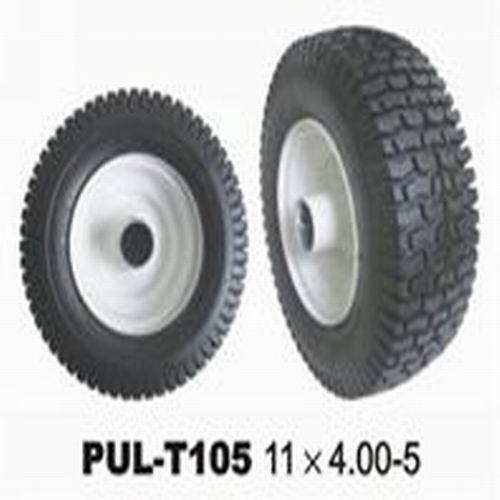
With the foam can connected and the mask placed, the next step is to start drilling holes in your tire near the rim. Use a drill bit of the same measurement as the straw coming out of the foam can; I used a 3/8″ drill bit. It is best to keep the holes in the center of the tire as much as possible. The more even the holes are, the better.
Now it’s time to inject the foam. Make sure the tire is resting back against a solid object, such as an unmovable post. Then, insert the straw as far as it will go into the hole of the tire, pull the trigger, and hold the plunger for around 4–5 seconds. After waiting for four to five seconds, release the trigger and start over after five seconds. You need to repeat the process until you see some foam leaking from the tip of the hole. The foam should go in freely without sticking on the rim.
When you are finished filling the tires, it is important to let them “rest” for at least 24 to 48 hours to ensure that they are completely dry.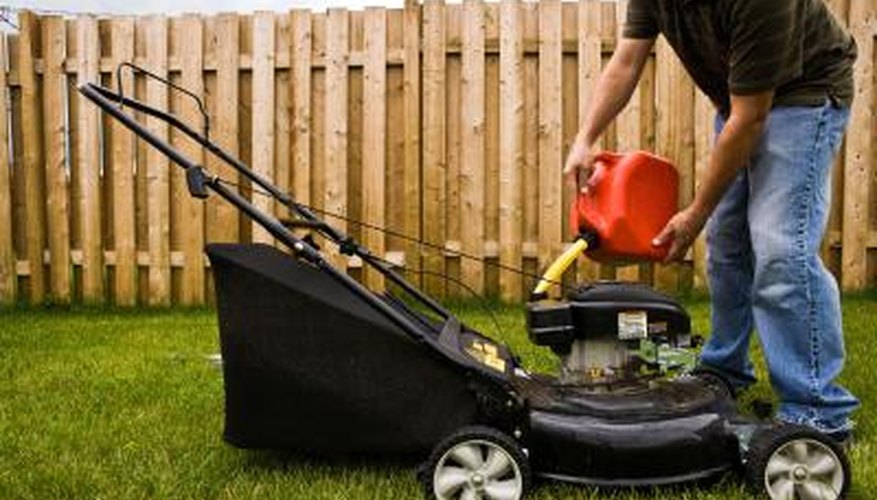 You will know this happens when you take the cover off, and it won’t smell. Once this process happens, remove the sections that dried while in the bottom of the hole, and it should just flake or fall out. This is a good test that the tire has completely dried.
You will know this happens when you take the cover off, and it won’t smell. Once this process happens, remove the sections that dried while in the bottom of the hole, and it should just flake or fall out. This is a good test that the tire has completely dried.
Now you can go ahead and put the wheels back on the mower. You may start mowing right away if you want to do so.
The difficulty of trying to reverse or convert the foam fill tires back to the old standard is that you’ve already ruined the tire’s natural tissue of rubber and inner material. It is best to take these tires to a reputable tire center for a re-inflate or to have new tires placed on the rims. They can handle this difficult conversion for you.
200x50 Tire Solid Tire(Foam Filled Tires) For Razor E100 E150 E175 E200 fits Gas Scooter Electric Scooter 2-wheel Smart Self Balancing Scooter By TOPEMAI
FYIYI New solid/foam filled 200x50 (8 X 2) Tire For Razor 200 X 50 (8 X 2) E100 E150 E175 E200
260x 85 (10x3) Primo Power Trax Foam Filled Tire for Scooters, Power Chairs and Electric Wheelchairs.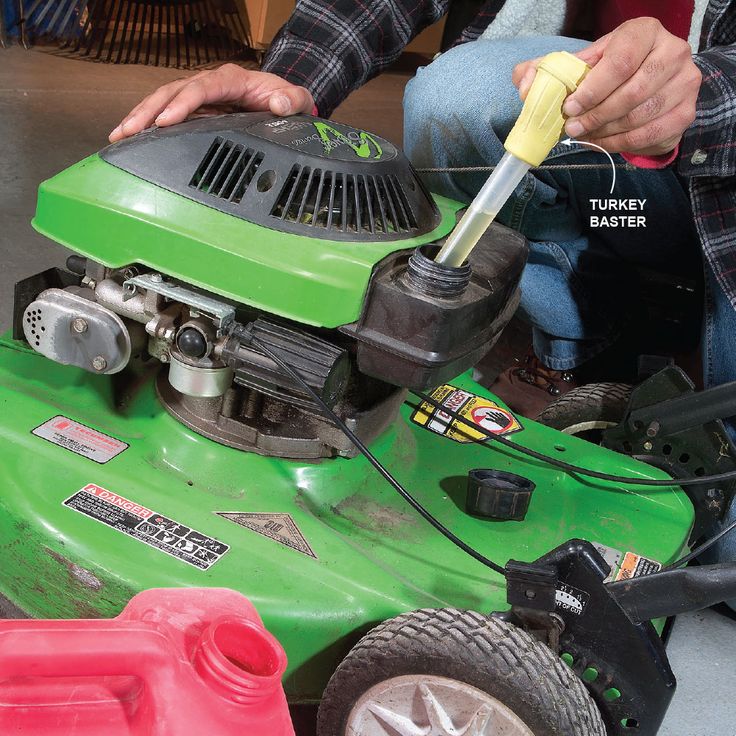 Price is for 1 Tire
Price is for 1 Tire
Check Price on Amazon
Check Price on Amazon
Check Price on Amazon
200x50 Tire Solid Tire(Foam Filled Tires) For Razor E100 E150 E175 E200 fits Gas Scooter Electric Scooter 2-wheel Smart Self Balancing Scooter By TOPEMAI
Check Price on Amazon
FYIYI New solid/foam filled 200x50 (8 X 2) Tire For Razor 200 X 50 (8 X 2) E100 E150 E175 E200
Check Price on Amazon
260x 85 (10x3) Primo Power Trax Foam Filled Tire for Scooters, Power Chairs and Electric Wheelchairs. Price is for 1 Tire
Check Price on Amazon
Foam-filling tires is not a hard process, and you can easily do this for yourself. However, taking great care and ensuring that the tires are properly dried are both important steps, both of which will determine the success of your tire projects. Thus, by following the steps listed above, you are sure to have a hassle-free foam-filling endeavor.
Read More: Lawn Mower Oil Change Guide
Foam-filling skid steer tires is considered a safe option as doing so gives more durability, traction, and strength to the tires. To fill foam in the tires, you can either take the DIY approach or get a mechanic to do it for you.
To fill foam in the tires, you can either take the DIY approach or get a mechanic to do it for you.
The better option is to go to a mechanic. But if you want to do it yourself, pay attention to the tire and closely observe till the point foam starts to leak out from the valve stem portion.
What's In This Guide?
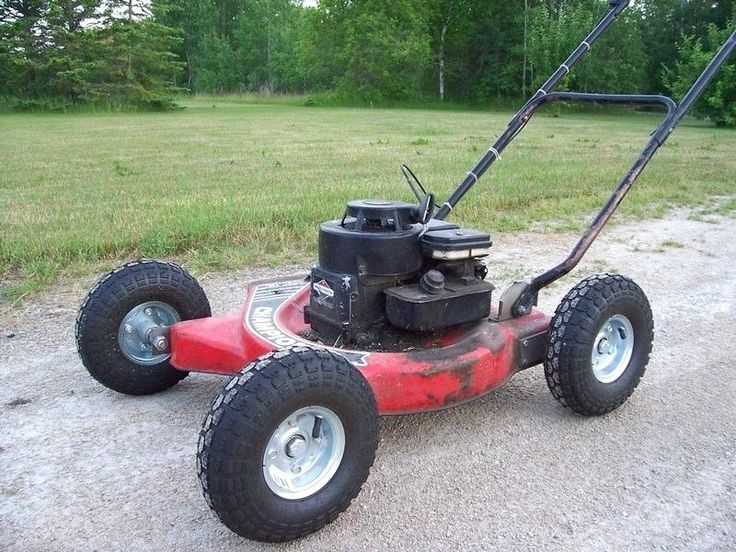 The wood or cloth is for the mess created with the foam filling.
The wood or cloth is for the mess created with the foam filling. What Are Foam Filled Skid-steer Tires?
Foam-filled tires are a type of pneumatic tires that were introduced to replace air-filled tires. Because the air-filled tires run the risk of going flat due to a wide gamut of reasons, the foam-filled tires do not go flat. They also provide the same benefits as air tires in terms of traction, performance, and mileage without the part where the tires can get punctured.
They also provide the same benefits as air tires in terms of traction, performance, and mileage without the part where the tires can get punctured.
Plus, the foam fill tires will also not lose air pressure. We use foam filled tires on skid steers due to their ability to perform well even in harsh conditions. Skid steers will majorly run on rough roads filled with pebbles, rocks, dirt, etc.
So, we prevent changing and repairing any damage caused to the tires due to such terrains using foam fill tires. In addition to these benefits, the foam-filled tires are better at maneuvering, and they bring efficiency into the operations, especially in the kind of work done by the skid steers.
Foam-filled tires give more stability to the skid steer, which is good. But some might argue that they also provide the extra weight, which can lead to mileage issues. Additional vehicle stability offers better control in rough terrains, which is difficult to obtain with air-filled tires. Hence foam-filled tires provide better footing to the vehicle.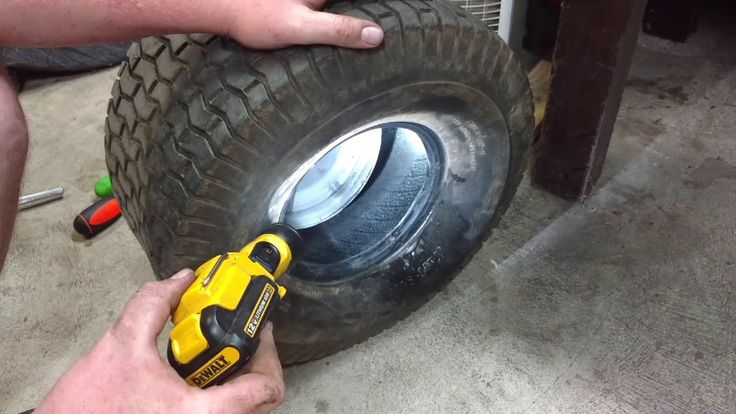
However, the same extra weight on the tires reduces their lifespan relative to the air-filled skid steer tires. Added to this, if the vehicle is working in rough terrains continuously for a longer period with foam fill tires, the speed of tires losing their grooves and tread increases.
To sum it up, foam fill tires bring extra stability that contributes to the driver’s safety, reducing the tire’s lifespan.
Polyurethane is used to create the foam that takes up space inside the tires. Thus, giving the tire puncture resistance plus more stability along with the weight. Due to the usage of polyurethane, foam fill is also called polyfill.
The weight of foam-filled tires depends on the volume of foam added to the tire, which further depends on the size of the skid steer tire. Two of the most common skid steer tires have the following dimensions;
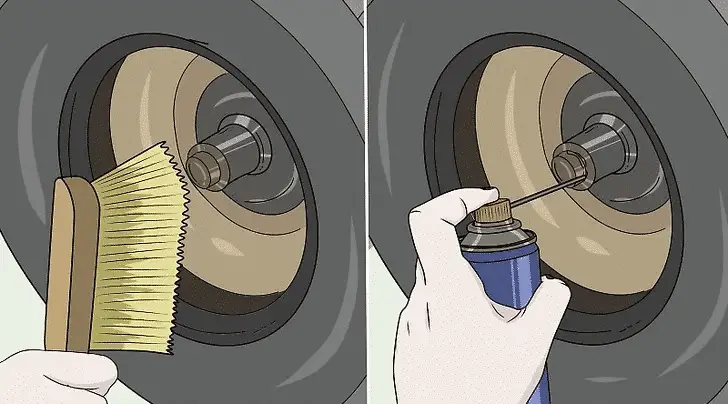 5
5Based on these dimensions, the weight of one foam-filled 10×16.5 tire will be 130 pounds. So for four tires, the total weight added to the skid steer is 520 pounds, just for the tires. The same for a 12×16.5 tire will be 205 lbs, and for four tires, the total volume of foam required will be 820 lbs. This is what gives extra stability to the vehicle and makes it a better choice for rough terrains.
The short answer would be no. For one, the skid steer tires are nothing like car tires. These are the big boys we are talking about, and handling them is easier said than. We understand that taking the skid steer to the mechanic is also a task, but going to the mechanic is the safer route.
Foam is not bad for tires per se. Yes, it makes the tires heavier, and it won’t bulge or bend under pressure. In some situations, this can cause some trouble with driving due to gripping issues.
The only downside to filling foam in the tires is that they are practically junk after they wear out. You cannot use them in other places, at least not easily. Plus, the tires will be heavier than other bald tires, which may be used in other places.
But performance-wise, foam is not bad for tires. If anything, it improves the tire’s life span as there won’t be any puncture issues.
Yes, the process is safe. As long as you are following the proper process, things will go smoothly. However, the problem may arise after replacing the tire on the vehicle because we have heard cases when tires went flat right after bringing the vehicle down.
It depends on the tire and the cost of the container, and its capacity. As discussed above, one 10×16.5 tire requires 130 lbs, and one 12×16.5 tire requires 205 lbs of foam. Depending on the volume required (approximately 24. 5 gallons for one 12×16.5 tire), you can calculate the cost.
5 gallons for one 12×16.5 tire), you can calculate the cost.
Yes, the US FMCSA regulations Section 393.75 mandates that the tire can be filled with materials other than air including silicone and polyurethane.
Over time, any villager and summer resident gets a lot of various wheeled vehicles that require constant attention and care, including the repair of pneumatic tires and their regular inflation. And it often happens that at the most necessary moment the wheels of turn out to be flat. And as technology ages, this happens more and more often. For example, these troubles began to haunt me constantly, and especially often in winter, in the most severe frost. And that's even worse.
To fill the wheel tire with foam, you first need to drill several holes in the rim with a diameter of 10 mm ...
Finally, I got tired of it, and I solved the problem radically - I “pumped up” the tire not with air, but with polyurethane foam.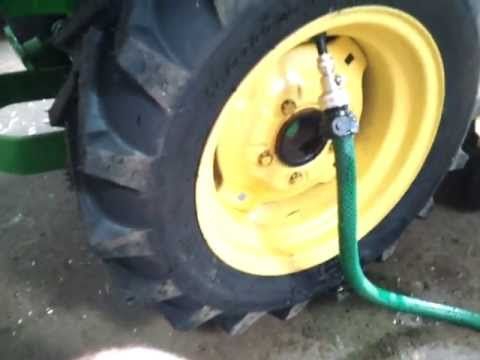 I first tried filling the tire with foam through the nipple hole. It turned out, but not entirely successful - in some places, due to traffic jams, air sacs remained unfilled with foam. In addition, a significant part of the foam from the hole of the nipple squeezed back.
I first tried filling the tire with foam through the nipple hole. It turned out, but not entirely successful - in some places, due to traffic jams, air sacs remained unfilled with foam. In addition, a significant part of the foam from the hole of the nipple squeezed back.
But the trouble is the beginning! After trying several different options, I eventually found a way to fill the tire with foam without plugs or air pockets. To do this, I drilled several holes 010 mm around the circumference of the wheel disk in such a way that the tube from the foam can freely enter into them. Before starting to fill the tire with foam, it is necessary to prepare several wooden plugs-pegs (according to the number of drilled holes in the disk), which should fit tightly into these holes and prevent the foam from breaking free.
Insert the canister tube into any of the holes drilled in the disk and start the foam supply.
As soon as the first traces of foam that have reached it appear in the adjacent hole, we stop the supply from the can and immediately plug the first hole of the plugs tightly with a peg.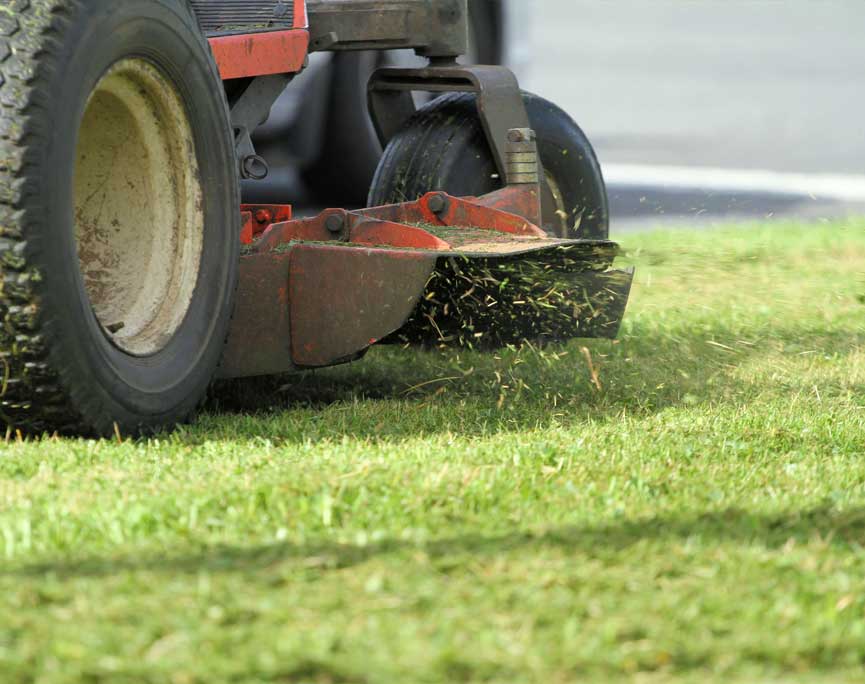 After that, you can start feeding foam into the next hole. Then to the next...
After that, you can start feeding foam into the next hole. Then to the next...
In the same way, you can fill the tires of any other wheeled equipment, such as a garden cart, with foam.
Fill the tire with foam as follows. We insert the tube of the can into any of the holes drilled in the disk and start the flow of foam. As soon as the first traces of the foam that has reached it appear in the adjacent hole, we stop the supply from the can and immediately plug the first hole tightly with a peg. After that, you can start feeding foam into the next hole. Then to the next. The last hole, as a rule, no longer needs to be foamed, and as soon as foam appears from it, you just need to plug it with a peg plug. With this sequence of filling, air sacs usually do not remain.
The process of self-vulcanization of the foam inside the tire - in a closed volume without air access - takes a little longer than under normal conditions. The operation of foam-filled wheels can be started no earlier than in a day. And with a large volume of tires, it is better to wait at least two days.
And with a large volume of tires, it is better to wait at least two days.
I have been using this technology for filling tires with foam for more than 10 years, and the first foamed tire is still working properly today, although I use it without any discounts both in winter and in summer. For several years, one of the wheels of my old truck was filled with foam. It no longer made sense to repair this wheel in the traditional way, and after filling it with foam, I drove it for quite some time, however, at low speed and for short distances, mainly in the village. The motorcycle that I use for trips to the forest for mushrooms has been running on foam tires for many years.
Initially, I had doubts about the durability of tires filled with foam, but over the years I have become convinced that without air access, the foam does not break down at all and serves reliably, especially where high speeds are not needed. It is also noteworthy that lugs can be easily fixed on foamed wheels, and using the most common screws with nuts or screws for this. This is especially true when operating equipment in winter for driving on snow-covered roads or off-road.
This is especially true when operating equipment in winter for driving on snow-covered roads or off-road.
Author; Vladimir Mikhailovich Legostaev0009
Rate this article:
(26 votes, average: 4.4 out of 5)
Share with your friends!
Lawn mower is certainly one of the most "closest" garden tools to people. History shows how long a man and a lawn mower coexist, how early, for the sake of ensuring his comfort, a person felt the need for such a tool. So, the appearance of the "English" lawn with low-cut grass dates back to 1610.
The first lawn mower appeared almost two centuries ago: it happened in 1830. The experienced senior foreman of a textile factory, Englishman Edwin Budding, created the first cylindrical lawn mower. The basis of its design was one of the modifications of weaving machines. And two years later, the device invented by Budding was so technically debugged that it went on mass commercial sale. The British liked this lawn mower so much that they quickly abandoned the use of a scythe and switched to a new technique. Over time, for large plots, they invented a horse-drawn mower, and then models of lawn mowers with a steam engine were patented. At the beginning of the 20th century, gasoline lawn mowers appeared, and from the 19thIn the 1970s, the lawn mower fleet was replenished with electric lawn mowers. Now we can already say that many users treat this seemingly simple mechanical thing with special warmth, almost like their favorite car. And the lawn mower will probably not disappoint or upset you ever, if you strictly follow the safety rules when working with it.
And two years later, the device invented by Budding was so technically debugged that it went on mass commercial sale. The British liked this lawn mower so much that they quickly abandoned the use of a scythe and switched to a new technique. Over time, for large plots, they invented a horse-drawn mower, and then models of lawn mowers with a steam engine were patented. At the beginning of the 20th century, gasoline lawn mowers appeared, and from the 19thIn the 1970s, the lawn mower fleet was replenished with electric lawn mowers. Now we can already say that many users treat this seemingly simple mechanical thing with special warmth, almost like their favorite car. And the lawn mower will probably not disappoint or upset you ever, if you strictly follow the safety rules when working with it.
| Horse-drawn lawn mower |
Of course, home lawn mowers are usually subject to worldwide safety regulations and standards, but the real responsibility for safe operation of the lawn mower still rests with the mower operator. Think about it: after all, with any number and set of protective devices and functions that your lawn mower has, it must still be able to mow grass - otherwise it becomes useless, turns into bulky trash. As long as it can effectively cut grass, it still has the potential to cut you too! Let the list of tried and tested tips below help you operate your lawnmower in the safest possible way.
Think about it: after all, with any number and set of protective devices and functions that your lawn mower has, it must still be able to mow grass - otherwise it becomes useless, turns into bulky trash. As long as it can effectively cut grass, it still has the potential to cut you too! Let the list of tried and tested tips below help you operate your lawnmower in the safest possible way.
So, we have already mentioned that the sharp blades of lawn mowers are dangerous not only for the grass. Having become acquainted with all the risk factors from lawn mowers, you will firmly understand for yourself that preparation for working with lawn mowers, the rules for mowing them and their subsequent care are now of paramount importance. Both the safety of the user of the lawn mower and the period of reliable trouble-free service of this tool directly depend on these details. Protect yourself and your rather expensive mowing equipment more reliably!
The lawn mower seems so innocuous that often its users do not attach the necessary importance to the rules of safe work with it. Meanwhile, you will agree that you will never give the steering wheel of your car to a person without a driver's license, and even more so to a child. And in the case of mower handlebars, it should not be otherwise. As the owner of your lawn mower, you are primarily responsible for it, for the safety of the people you allow or even direct to work with it. A real professional will probably never allow an inexperienced user to start acquaintance with his chainsaw from felling trees. Everyone understands how dangerous this will be. And the topic of safety when working with lawn mowers cannot be considered unimportant or boring either: get to know her sad statistics closely. According to the American health system, every year in the United States - the largest consumer of lawn mowers - about 80,000 people, having worked with their lawn mower unit, are then forced to go to the doctor, 32% of all these cases are associated with traumatic toe amputation.
Meanwhile, you will agree that you will never give the steering wheel of your car to a person without a driver's license, and even more so to a child. And in the case of mower handlebars, it should not be otherwise. As the owner of your lawn mower, you are primarily responsible for it, for the safety of the people you allow or even direct to work with it. A real professional will probably never allow an inexperienced user to start acquaintance with his chainsaw from felling trees. Everyone understands how dangerous this will be. And the topic of safety when working with lawn mowers cannot be considered unimportant or boring either: get to know her sad statistics closely. According to the American health system, every year in the United States - the largest consumer of lawn mowers - about 80,000 people, having worked with their lawn mower unit, are then forced to go to the doctor, 32% of all these cases are associated with traumatic toe amputation.
The experience of these accidents points us to the main risk factors in the operation of the lawn mower:
At this stage, in general, avoiding dangers is quite simple: it is enough to carefully study the instruction manual for your mowing tool and then follow the rules for its safe operation.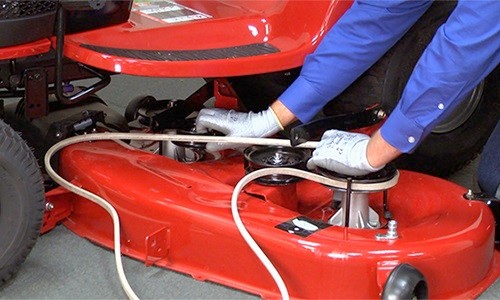 Only after carefully reading this manual, you can take on the tool itself. Install the control handle according to the instructions on it, attach, if necessary, a grass catcher. If the lawn mower is gasoline, of course, fuel and oil are poured into it. Never refuel the lawn mower or remove the fuel tank cap when the engine is hot! Fill the tank with fuel before starting the mower while the engine is cold.
Only after carefully reading this manual, you can take on the tool itself. Install the control handle according to the instructions on it, attach, if necessary, a grass catcher. If the lawn mower is gasoline, of course, fuel and oil are poured into it. Never refuel the lawn mower or remove the fuel tank cap when the engine is hot! Fill the tank with fuel before starting the mower while the engine is cold.
Note that many lawnmowers have additional options and safety devices. So, with a lock against spontaneous switching on, the lawn mowers start only if a special button is pressed along with the lever. Once started, this button can be disabled and the engine will now run as long as the lever on the mower handle is pressed. As soon as the lever is released, the mower blade stops rotating. The ignition key should also be considered a special element for the safety of a gasoline lawn mower, without which it cannot be started.
You should know all the features of the safety options before you start working with your lawn mower, so that you can use them, for example, to stop your tool in an emergency if necessary.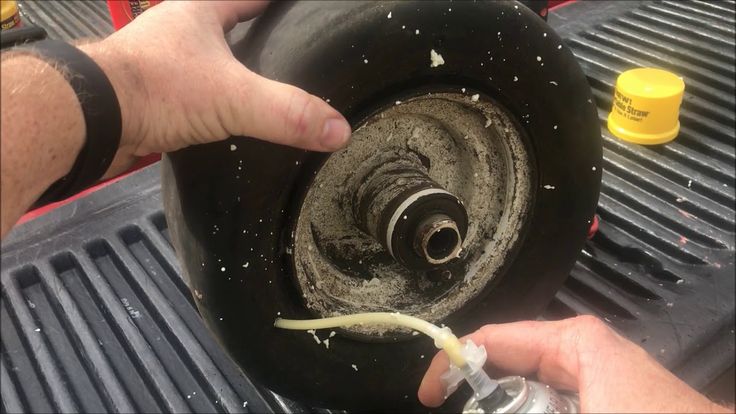 Never attempt to override or disable your safety devices, such as an attendance monitor (or a device that prevents your machine from operating with the grass catcher, discharge chute or mulch plate removed). They can annoy you as much as you like, however, their task is to protect you. Do not exclude them from its rigorous implementation.
Never attempt to override or disable your safety devices, such as an attendance monitor (or a device that prevents your machine from operating with the grass catcher, discharge chute or mulch plate removed). They can annoy you as much as you like, however, their task is to protect you. Do not exclude them from its rigorous implementation.
Separately, each time before switching on, check the condition of the mowing blade, the body itself, and for electric mowers and the power cable for damage. It is necessary to first try to remove all foreign objects from the lawn being mowed: sticks, stones, caked clods of earth and so on. They can damage the lawnmower itself. Before starting the mower, remove even "innocent" toys or dog bones from the lawn: after all, any foreign objects that fall under the lawn mower can be thrown out from under it with great speed.
You will also have to prepare yourself for work: for your personal safety, you will need solid, closed shoes with non-slip, protected soles.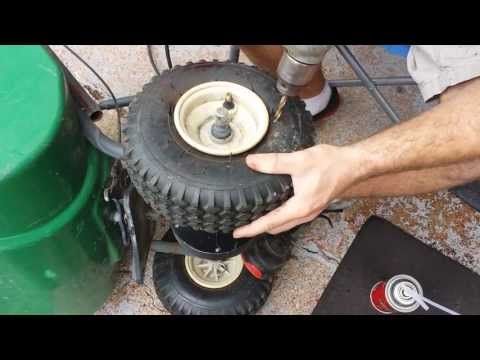 It would be better to wear long trousers for work, rather than shorts. As a rule, work is started in the morning or in the afternoon in conditions of good visibility. No people or animals should be in the vicinity. Never let children or pets get close to the lawnmower during work. After all, there is a danger for them not only to cut themselves with a knife under the deck, but also to get injured due to an object thrown by the lawn mower in operation. Consider the radius of the danger zone to be at least thirty meters. Particular attention should be paid to small children, they are unpredictable in their behavior, so when they appear near the lawn mower, it would be better to simply turn off its engine. Moreover, do not let small children operate the lawn mower by themselves, and never allow children to ride it while you are working.
It would be better to wear long trousers for work, rather than shorts. As a rule, work is started in the morning or in the afternoon in conditions of good visibility. No people or animals should be in the vicinity. Never let children or pets get close to the lawnmower during work. After all, there is a danger for them not only to cut themselves with a knife under the deck, but also to get injured due to an object thrown by the lawn mower in operation. Consider the radius of the danger zone to be at least thirty meters. Particular attention should be paid to small children, they are unpredictable in their behavior, so when they appear near the lawn mower, it would be better to simply turn off its engine. Moreover, do not let small children operate the lawn mower by themselves, and never allow children to ride it while you are working.
Having prepared the scope of work, you can start the engine on the lawnmower with a clear conscience and start moving across the lawn.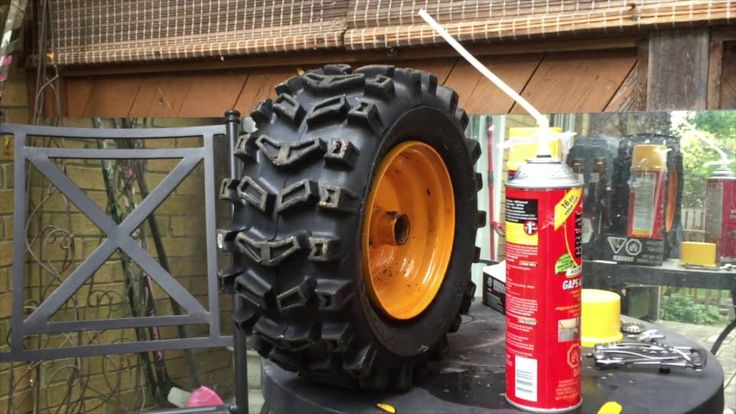 The main rule: you need to walk with an even step, you can only push the lawn mower forward, not returning with it back. Push, don't pull: lawnmowers are designed to be pushed forward as you work. When they are pulled back, the risk of traumatic contact with the blade of their mowing knife increases significantly. It is understandable that you will occasionally need to pull the lawn mower backwards when making maneuvers, however, in all other cases, such movement should be avoided. Reverse is performed only with the engine off.
The main rule: you need to walk with an even step, you can only push the lawn mower forward, not returning with it back. Push, don't pull: lawnmowers are designed to be pushed forward as you work. When they are pulled back, the risk of traumatic contact with the blade of their mowing knife increases significantly. It is understandable that you will occasionally need to pull the lawn mower backwards when making maneuvers, however, in all other cases, such movement should be avoided. Reverse is performed only with the engine off.
| Lawn mower blade |
Working on a slope is always more difficult - be prepared for this. You need to move along the slope, and not up and down. Unlike riding a rider or tractor, it is safest for you to cross the slope with your lawn mower, not from above or below. When driving across a slope, even if you slip, the lawnmower will not run over or run over you.
It is best to cut the grass, of course, when both it and the soil under it are dry, especially since for an electric lawn mower, mowing wet grass (as well as working in the rain) is simply strictly prohibited (so as not to expose yourself to the danger of electric shock ). At the same time, electric lawnmowers will require special attention to their power cable, which should not be in the path of the mower, so as not to get under its knife.
If mowing is obstructed, the mower must first be switched off before moving away from it. Be sure to turn off the engine, even if you are going to step away from the lawnmower literally "for a minute." On some units there is even a special device for monitoring the presence of its operator at the lawn mower - it will automatically turn off the engine if you release the mower control handle.
If you need to clean the deck of your lawn mower, you should wait until the mowing blade has come to a complete stop before proceeding to inspect the deck. Even the grass bag should be cleaned with the engine off: make sure the mowing blade has stopped before emptying your grass bag. Also, before putting your hand into the grass ejection chute, be sure to turn off the engine, even if you are sure that the mowing blade has already stopped. Paths with a hard surface are also overcome with the engine turned off.
Even the grass bag should be cleaned with the engine off: make sure the mowing blade has stopped before emptying your grass bag. Also, before putting your hand into the grass ejection chute, be sure to turn off the engine, even if you are sure that the mowing blade has already stopped. Paths with a hard surface are also overcome with the engine turned off.
It is strongly recommended that the mower operator wear various personal protective equipment when working. To protect the organ of hearing, it is convenient to use ear plugs or headphones. According to medical data, it is known that hearing loss persistently occurs with prolonged exposure to sounds of about 90 decibells on the ears. But it is precisely this level of noise that lawn mowers have. The loudest of them are models with internal combustion engines, their noise levels can even exceed 100 decibells. Almost every manufacturer of mowing equipment indicates that it is their machines that have a low noise level: for this reason, carefully compare the characteristics indicated in the passport of your lawn mower with the numbers above. Such an analysis of noise indicators will help determine whether you need headphones.
Such an analysis of noise indicators will help determine whether you need headphones.
Goggles are recommended to protect your eyes from grass dust. Also make sure to wear gloves. With large volumes of work, they will protect your hands from the appearance of calluses on them from the mower control handle. If there is no rubber pad on the handle, gloved hands will not slip off it. Do not skimp on equipping yourself, because the listed personal protective equipment will be useful to you when performing many other garden chores.
Cleaning your lawnmower after work can significantly increase its long and trouble-free life. Just wiping the blades of the mowing knife will not be enough. And again, let's start with the observance of safety requirements. Depending on the engine type of your mowing tool, you will need to unplug its power cord from the outlet, turn off the battery or the fuel supply. For electric lawn mowers, after the end of the working cycle, the condition of the electric cable is checked for a break, and there is no insulation failure. To avoid it, use only high-quality extension cords when working with a lawn mower. To connect the lawn mower, it is recommended to use a socket with a residual current device (RCD). For the safety of the tool itself, it is very important that the voltage in your mains is supplied within a known norm.
To avoid it, use only high-quality extension cords when working with a lawn mower. To connect the lawn mower, it is recommended to use a socket with a residual current device (RCD). For the safety of the tool itself, it is very important that the voltage in your mains is supplied within a known norm.
Always place the machine on a firm surface before servicing. Remains of grass and soil are removed from the knife, deck, grass catcher with a brush and a rag. Then wipe the rest of the body and air intake grilles with a clean cloth. Reel lawnmowers require maintenance of their mowing blades. For their self-sharpening, a special device is produced to which an abrasive tape is attached. It is placed on a fixed knife. Sharpening in this case occurs when the drum is idle. Even taking into account the presence of such sharpening devices, we recommend that you still give the tool for sharpening to a service center. Although it may seem unsafe, it is the sharpness of the mowing blades that will allow your lawnmower to work more efficiently, thereby reducing the frequency of both topping up fuel and performing repetitive lawn maneuvers.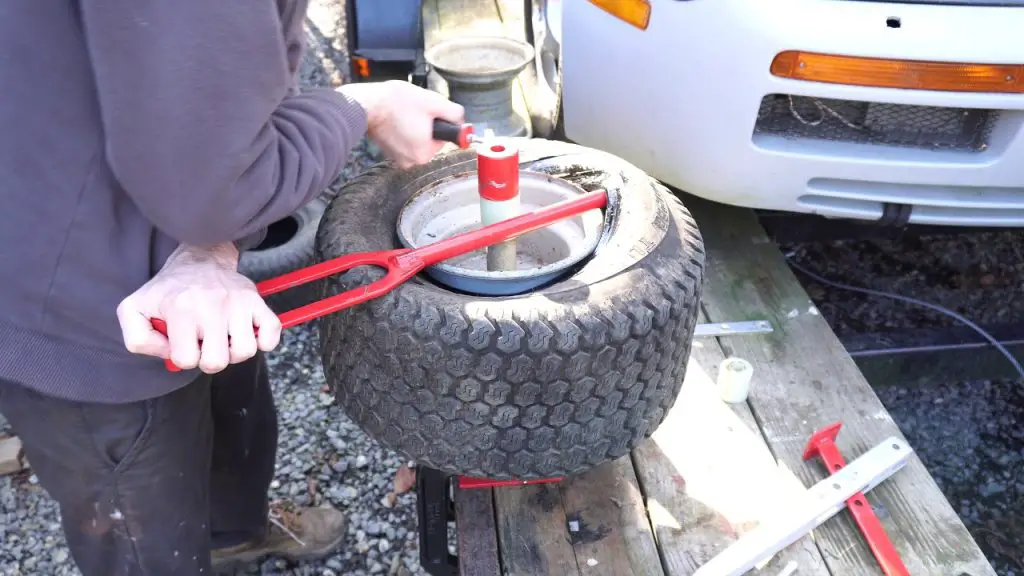 However, very often the deterioration in the quality of the cut is not due to dull blades, but is caused by improper adjustment of mowing knives. In such cases, you can carefully check the cutting mechanism: place a sheet of paper between the lower knife and the rotating blade. If it is cut evenly, then everything is in order. Otherwise, you will have to tighten the fixing screws.
However, very often the deterioration in the quality of the cut is not due to dull blades, but is caused by improper adjustment of mowing knives. In such cases, you can carefully check the cutting mechanism: place a sheet of paper between the lower knife and the rotating blade. If it is cut evenly, then everything is in order. Otherwise, you will have to tighten the fixing screws.
| Bosch cordless lawn mower |
Battery models of lawn mowers, their maintenance after work will require careful attention to the battery and charger: it is necessary to completely exclude the possibility of moisture getting on them. The battery should also be protected from overheating. It is not recommended to store rechargeable batteries next to small metal objects, they can short-circuit their poles, up to spontaneous combustion. A damaged battery may emit liquids or gases that can cause irritation to the skin and respiratory tract.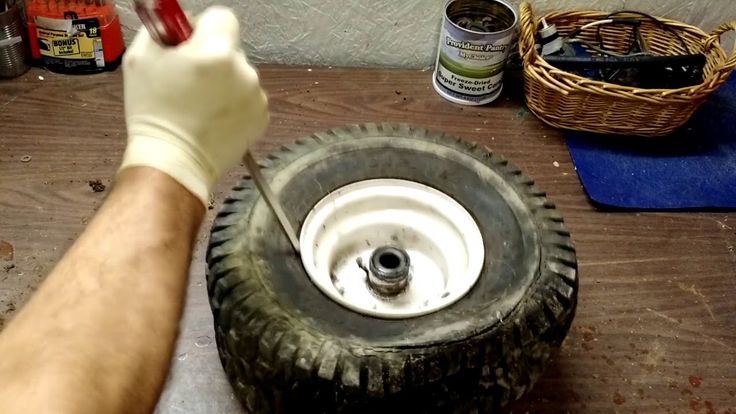 Therefore, faulty battery devices are subject to mandatory and prompt disposal; you cannot open such batteries yourself. Wash your hands thoroughly after servicing a lead battery.
Therefore, faulty battery devices are subject to mandatory and prompt disposal; you cannot open such batteries yourself. Wash your hands thoroughly after servicing a lead battery.
In the case of petrol lawn mowers, the main effort in after-work care is to properly maintain the petrol engine. Experienced users even recommend starting a special journal and marking in it all performed and planned operations - such as changing oil, spark plugs, and so on. In addition to carefully filling out such a log, sound safety precautions will also be required ... When performing maintenance on your lawn mower, be sure to disconnect the wire from the spark plug to prevent accidental and unexpected starting for you. This is especially important if you are removing the mowing blade at this time. Turning the blade bolt with a wrench can also turn the blade if the engine is accidentally started.
Lawn mower fuel can also be dangerous. Explosive! Therefore, the mowing tool should only be refueled with the engine switched off, in an open area where smoking is prohibited. Oil is added only when the engine of the lawn mower has really cooled down. If you have spilled gasoline somewhere, you will not be able to start your mower in that place until it has evaporated. The lawn mower with the engine running must also not be left indoors due to the risk of exhaust fumes poisoning.
Oil is added only when the engine of the lawn mower has really cooled down. If you have spilled gasoline somewhere, you will not be able to start your mower in that place until it has evaporated. The lawn mower with the engine running must also not be left indoors due to the risk of exhaust fumes poisoning.
In the manuals for quality lawn mowers, there is always a fairly detailed table with a list of possible faults and a description of how to eliminate them. According to its settings, many problems can be fixed on their own, and they are not a breakdown of the lawn mower itself. So, a common reason that the lawn mower begins to move with difficulty is the contamination of the wheels, mowing knives, clogging of the air intake with grass. In some cases, consumables such as a knife or spark plug will need to be replaced. In order to prevent the occurrence of serious malfunctions in time, you, inspecting your mowing device after work, identify and replace defective parts in time.